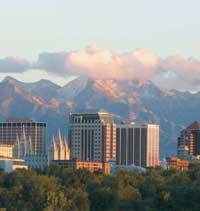Optimistic Indicators
In summer 2005, Utah‘s economy was growing at its strongest pace in eight years, according to the governor’s economic development office. Roughly 38,000 new jobs had been added in just one year, and the unemployment rate was down to 4.9 percent–a rate expected to continue to fall over the next two years. In September 2005, Utah’s job growth of 3.6 percent placed the state in the top five nationally, according to the state’s Department of Workforce Services.
The commercial office and industrial markets are improving as well, with Salt Lake County’s overall office vacancy rate falling from 15.8 percent at the end of 2004 to 11.3 percent–its lowest point in four years–at the end of 2005. Salt Lake County’s industrial market vacancy rates also have improved, from 9.4 percent in third quarter 2004 to 7.4 percent one year later.
On the residential side, the area’s population is growing exponentially. Utah boasts more than 2.3 million residents, a figure that is growing at more than 29 percent, which is more than double the U.S. average. The population of 958,000 residents in Salt Lake County is growing equally fast and pushing the bounds of new development. This is particularly true in the more affordable areas of Davis County, to the north of Salt Lake City, and Utah County to the south.
In South Jordan, about 15 miles south of Salt Lake City, a major master-planned development named Daybreak is underway by Kennecott Land. The developer is a sister company to Kennecott Utah Copper, the second largest copper producer in the nation. Daybreak, when completed, will be a sustainable, full-service community with local and regional employment as well as residential, retail, civic, and recreational uses. Kennecott is finalizing plans to deliver the first commercial mixed-use product to Daybreak in the form of a commercial village center that is adjacent to the 100-acre Oquirrh Lake. These plans include an array of retail, office, and residential uses in an urban “Main Street” setting. Daybreak, which broke ground in June 2003 and opened in June 2004, encompasses more than 13,000 homes and 9.1 million square feet of office, retail, and industrial space.
The multifamily market also is ramping up downtown after struggling through a course of decline for more than a decade. Creating new living units and instilling vibrancy back into the downtown area was part of a platform on which Salt Lake City Mayor Ross Anderson won his last campaign in 2003. Now his vision finally is beginning to become a reality.
